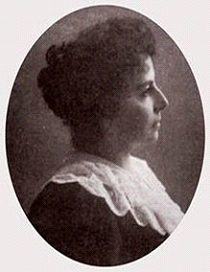Danielyan, Haykanush Baghdasari
Lyrical‑Coloratura Soprano
1893-1958

July 14, 2021
Share
Born in Tiflis, Danielyan received her elementary education in the region. She graduated from the St. Petersburg Conservatory in 1920, and later developed and refined her voice in a class taught by I. I. Iretskaya. Between 1920 and 1922 Danielyan performed in the Theatre of Musical Comedy in Petrograd, which was led by K. Mardjanashvili. From 1922 to 1932 she sang in the State Opera and Ballet Theatre named after Paliashvili in Tiflis. Simultaneously in 1924 she participated in the performances of the Aleksandropol (currently Gyumri) Opera-Operetta Group together with Shara Talyan and Levon Isetski (Ter‑Hovhannisyan).
In 1932 Danielyan began appearing with the Yerevan Opera and Ballet Theatre named after A. Spendiaryan. Simultaneously she taught at the Komitas Conservatory (1943‑1951) and served as principal of the ten‑year music school named after P. Tchaikovsky in Yerevan.
Danielyan, who was elected to be a USSR General Assembly Representative at the Second Convention and an ASSR General Assembly Representative at the First and Second Conventions, was awarded the highest governmental medals.
At the Spendiaryan Opera and Ballet Theatre in Yerevan she successfully performed in European, Russian, and national operas. She was especially noted for the following roles: Gilda, Violetta, Desdemona (in Verdi’s “Rigoletto,” “Traviata,” “Otello”), Margaret (Gounod’s “Faust”), Countess Rosine (Rossini’s “The Barber of Seville”), Butterfly (in Puccini’s “Madam Butterfly”), Marfa (in Rimski‑Korsakov’s “The Tsar’s Bride”), Antonida (Glinka’s “Ivan Soussanine”), Marguerite de Valois (Meyerbeer’s “Huguenots”), Olympia (Chukajian’s “Arshak II”), Anush (in Tigranyan’s “Anush”), etc. Critics highly valued Danielyan’s performances..
Danielyan’s concerts included songs and romances by Tchaikovsky, Rakmaninov, Glazunov, and Rimski‑Korsakov. She performed with special love and “unmatched enjoyment” pieces by Armenian composers and Armenian folk songs.
Named USSR Folk Artist (1939), given a Laureate of State Award (1946), and appointed Professor (1949), Danielyan died in Yerevan and was buried in the Yerevan pantheon.
Prepared by the Central State Archives, Republic of Armenia
Bibliography:
Theatrical Encyclopedia, v. 2, Moscow, 1963 (in Russian).
- Stepanyan, Biographical Dictionary, v. 1, Yerevan, 1973.
Soviet Armenian Encyclopedia, v. 3, Yerevan, 1977.
Encyclopedia of the Republic of Armenia, v. 1, Yerevan, 1990.




